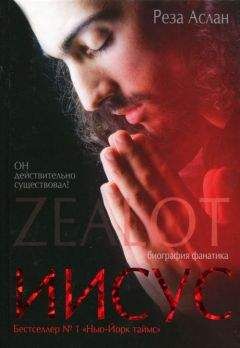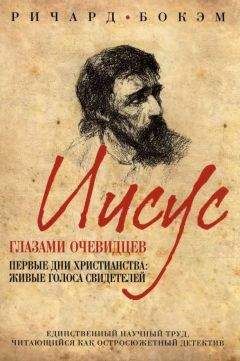Куллман также утверждает, что при Петре церковь гораздо мягче относилась к нарушениям Закона, но затем к власти пришел Иаков и потребовал более строгого соблюдения предписаний. Единственное свидетельство в пользу такой точки зрения — история римлянина Корнелия, обращенного в христианство Петром. Хотя историчность этого рассказа сомнительна, даже в том виде, что есть, он не доказывает терпимость Петра к несоблюдению иудейского Закона и уж точно не говорит в пользу того, что он возглавлял иерусалимскую общину. «Деяниям апостолов» красноречиво свидетельствуют о том, что мнения первых последователей Иисуса по вопросу о строгом соблюдении Закона сильно расходились. Возможно, Петр был более мягок и терпим, чем Иаков, но что из этого следует? Как отмечает Бернгейм, «нет никаких причин, чтобы говорить о том, что Иерусалимская церковь была менее либеральна в 48/49 гг. н. э., чем в 30-е гг. н. э.» (James, Brother of Jesus, p. 209).
Свидетельства в пользу датировки «Послания Иакова» I веком н. э. собраны в работе Wiard Popkes, «The Mission of James in his Time», The Brother of Jesus, p. 88–99. Мартин Дибелиус не согласен с этой датировкой. Он считает, что послание отражает смесь иудео-христианских учений, относящихся ко II веку (см. Martin Dibelius, James (Philadelphia: Fortress Press, 1976)). Интересно отметить, что послание Иакова адресовано «двенадцати коленам, находящимся в рассеянии». Похоже на то, что Иаков продолжал верить в исполнение обещания о воссоединении двенадцати колен и освобождении Израиля. Очень многое из Послания Иакова отразилось в Евангелии от Матфея, и ученые видят причину этого в том, что в основу евангелия легла традиция (часто условно обозначаемая буквой M), восходящая к Иакову.
Брюс Хилтон пишет об обете назорейства, который пришлось принять Павлу, в своей статье «James in Relation to Peter, Paul, and Jesus» (см. The Brother of Jesus, pp. 138–159). Он считает, что назореем был не только Иаков, но и сам Иисус. Отметим, что отрывок Деян. 18. 18 изображает Павла как участника некоего обряда, сходного с обетом назорейства. Отправившись морем в Сирию, он остановился в Кенхреях, восточном порту Коринфа. Здесь, как пишет Лука, он «остриг голову по обету». Хотя Лука явно намекает здесь на обет назорейства, похоже, он имел нечеткое представление о характере и практике этого обряда. Острижение волос было его конечной целью. Лука не пишет о том, какова была цель обета, данного Павлом, но если он имел отношение к тому, чтобы благополучно добраться до Сирии, то Павел не достиг конечной точки своего путешествия и, таким образом, не выполнил обет. Более того, «назорейский обет» Павла был дан не в Храме и не в присутствии священника.
В своей работе «Who Was James?» Джон Пейнтер очерчивает весь направленный против Павла материал, содержащийся в Псевдо-Климентинах, включая ссору между Павлом и Петром в иерусалимском Храме (с. 55–57). Также он уделяет внимание расширенному толкованию Закона Моисея в проповеди Иисуса (с. 55–57).
Члены общины, продолжавшей следовать учению Иакова на протяжении нескольких веков после разрушения Иерусалима, называли себя «эбионитами», то есть «бедными», в память о той главной цели, которую ставил перед собой Иаков — о служении бедным. Возможно, это название существовало еще при жизни Иакова, поскольку оно встречается во второй главе его послания. Эбиониты настаивали на проведении обряда обрезания и строгом соблюдении Закона. Даже в IV веке н. э. они продолжали видеть в Иисусе просто человека. Это было одно из неортодоксальных учений, которое подверглось преследованиям после того, как в 325 г. н. э. Никейский собор превратил христианство в версии Павла в официальную религию Римской империи.
Монографии
Anderson, Jeff S. The Internal Diversification of Second Temple Judaism. Lanham, Md.: University Press of America, 2002.
Aslan, Reza. How to Win a Cosmic War: God, Globalization, and the End of the War on Terror. New York: Random House, 2009.
Aus, Roger. Water into Wine and the Beheading of John the Baptist. Providence: Brown Judaic Studies, 1988.
Avi-Yonah, M., and Z. Baras, eds. The World History of the Jewish People: The Herodian Period. Jerusalem: New Brunswick, 1975.
Bammel, Ernst, ed. The Trial of Jesus. Naperville, IL: Alec R. Allenson, 1970.
Bammel, Ernst, and C. F. D. Moule, eds. Jesus and the Politics of His Day. New York: Cambridge University Press, 1984.
Batey, Richard A. Jesus and the Forgotten City: New Light on Sepphoris and the Urban World of Jesus. Grand Rapids, MI: Baker Book House, 1991.
Bauer, Walter. Orthodoxy and Heresy in Earliest Christianity. Mifflintown, PA: Sigler Press, 1971.
Beard, Mary, John North, and Simon Price. Religions of Rome: A Sourcebook. 2 vols. Cambridge: Cambridge University Press, 1998.
Beilby, James K., and Paul Rhodes Eddy, eds. The Historical Jesus: Five Views. Downers Grove, IL: InterVarsity Press, 2009.
Bernheim, Pierre-Antoine. James, The Brother of Jesus. London: SCM Press, 1997.
Berlin, Andrea M., and J. Andrew Overman, The First Jewish Revolt: Archaeology, History, and Ideology. New York: Routledge, 2002.
Black, Matthew. The Book of Enoch or 1 Enoch: A New English Edition with Commentary and Textual Notes. Leiden: Brill, 1985.
Blevins, James L. The Messianic Secret in Markan Research, 1901–1976. Washington, DC: University Press of America, 1981.
Blinzler, Josef. The Trial of Jesus. Westminster, Md: Newman Press, 1959.
Bohak, Gideon. Ancient Jewish Magic: A History. London: Cambridge University Press, 2008.
Borg, Marcus J. Jesus: A New Vision. New York: HarperCollins, 1991.
Brandon, S.G.F. Jesus and the Zealots. Cambridge: Manchester University Press, 1967.
Brighton, Mark Andrew. The Sicarii in Josephus’s Judean War: Rhetorical Analysis and Historical Observations. Atlanta: Society of Biblical Scholarship, 2009.
Brooke, G. Exegesis at Qumran: 4QFlorilegium in its Jewish Context. Sheffield: Sheffield Academic Press, 1985.
Brown, Raymond. The Death of the Messiah. 2 vols. New York: Doubleday, 1994.
Bruce, F.F. New Testament History. New York: Doubleday, 1980.
Bultmann, Rudolf. Essays: Philosophical and Theological. New York: Macmillan, 1995.
—. Faith and Understanding. London: SCM Press, 1969.
—. History of the Synoptic Tradition. San Francisco: Harper and Row, 1968.
Burkett, Delbert. The Son of Man Debate. New York: Cambridge University Press, 1999.
—. The Son of the Man in the Gospel of John. Sheffield: Sheffield Academic Press, 1991.
Cadbury, H. J., and K. Lake, eds. The Beginnings of Christianity. Vol. 1. London: Macmillan, 1933.
Casey, P. Maurice. Son of Man: The Interpretation and Influence of Daniel 7. London: SPCK Publishing, 1979.
Charlesworth, James H., ed. The Messiah. Minneapolis: Fortress Press, 1992.
—, ed. The Old Testament Pseudopigrapha. New York: Doubleday, 1985.
—, et al. Resurrection: The Origin and Future of a Biblical Doctrine. London: T&T Clark, 2006.
Chilton, Bruce D. Judaic Approaches to the Gospels. Atlanta: Scholars Press, 1994.
—, Jacob Neusner, eds. The Brother of Jesus. Louisville: Westminster John Knox Press, 2001.
Collins, John J. Apocalypticism in the Dead Sea Scrolls. London: Routledge, 1997.
—, ed. Daniel. Minneapolis: Fortress Press, 1993.
Collins, John J., and George Nickelsburg. Ideal Figures in Ancient Judaism: Profiles and Paradigms. Chico, CA: Scholars Press, 1980.
Comay, Joan. The Temple of Jerusalem. London: Weidenfeld and Nicolson, 1975.
Conybeare, F. C., ed. Philostratus: The Life of Apollonius of Tyana. London: Heinemann, 1912.
Cross, Frank Moore. Canaanite Myth and Hebrew Epic: Essays in the History of the Religion of Israel. Cambridge, MA: Harvard University Press, 1973.
Crossan, John Dominic. The Historical Jesus: The Life of a Mediterranean Jewish Peasant. New York: HarperCollins, 1992.
—. Jesus: A Revolutionary Biography. New York: HarperOne, 1995.
Cullman, Oscar. Christology of the New Testament. Philadelphia: Westminster Press, 1963.
—. Peter: Disciple. Apostle. Martyr. London: SCM Press, 1953.
—. The State in the New Testament. New York: Scribner, 1956.
Dahl, N. A. Jesus the Christ: The Historical Origins of Christological Doctrine. Minneapolis: Fortress Press, 1991.
Day, John, ed. Temple and Worship in Biblical Israel. New York: T&T Clark, 2005.
De Jong, M. Christology in Context: The Earliest Christian Response to Jesus. Philadelphia: Westminster Press, 1988.
Derrett, J.D.M. Law in the New Testament. Eugene, OR: Wipf and Stock, 2005.
Dibelius, Martin. James. Philadelphia: Fortress Press, 1976.
—. Studies in the Acts of the Apostles. New York: Scribner, 1956.
Dickie, Matthew W. Magic and Magicians in the Greco-Roman World. London: Routledge, 2001.
Edwards, Douglas R., and C. Thomas McCollough, eds. Archaeology and the Galilee. Atlanta: Scholars Press, 1997.
Edwards, George R. Jesus and the Politics of Violence. New York: Harper and Row, 1972.
Evans, Craig. Jesus and His Contemporaries. Leiden: Brill, 1995.
—, and J. A. Sanders. Luke and Scripture: The Function of Sacred Tradition in Luke-Acts. Minneapolis: Fortress Press, 1993.
Festinger, Leon. A Theory of Cognitive Dissonance. Stanford: Stanford University Press, 1957.
—, H. W. Riecken, and S. Schachter. When Prophecy Fails: A Social and Psychological Study of a Modern Group That Predicted the Destruction of the World. New York: Harper and Row, 1956.
Fitzmeyer, Joseph A. The Gospel According to Luke I–IX. Garden City: Doubleday, 1981.
Freyne, Sean. Galilee, Jesus, and the Gospels. Dublin: Gill and Macmillan, 1988.
Fridrichsen, Anton. The Problem of Miracle in Primitive Christianity. Minneapolis: Augsburg Publishing House, 1972.
Funk, Robert W., and Roy W. Hoover. The Five Gospels: The Search for the Authentic Words of Jesus. New York: Polebridge Press, 1993.
Gager, John. Kingdom and Community: The Social World of the Early Christians. Englewood Cliffs, NJ: Prentice Hall, 1975.
Golb, Norman. Who Wrote the Dead Sea Scrolls? The Search for the Secret Qumran. New York: Scribner, 1995.
Goodman, Martin. Rome and Jerusalem: The Clash of Ancient Civilizations. London: Penguin, 2007.
—. The Ruling Class of Judea. New York: Cambridge University Press, 1987.
Goguel, Maurice. Birth of Christianity. New York: Macmillan, 1954.
Grabbe, Lester L. Judaism from Cyrus to Hadrian. 2 vols. Minneapolis: Fortress Press, 1992.
Groh, Dennis E., and Robert Jewett, eds. The Living Texts: Essays in Honor of Ernest W. Saunders. Lanham, Md: University Press of America, 1985.
Gurtner, Daniel. Torn Veil: Matthew’s Exposition of the Death of Jesus. Cambridge: Cambridge University Press, 2007.
Hamerton-Kelly, R. G. Pre-Existence, Wisdom, and the Son of Man. Cambridge: Cambridge University Press, 1973.




